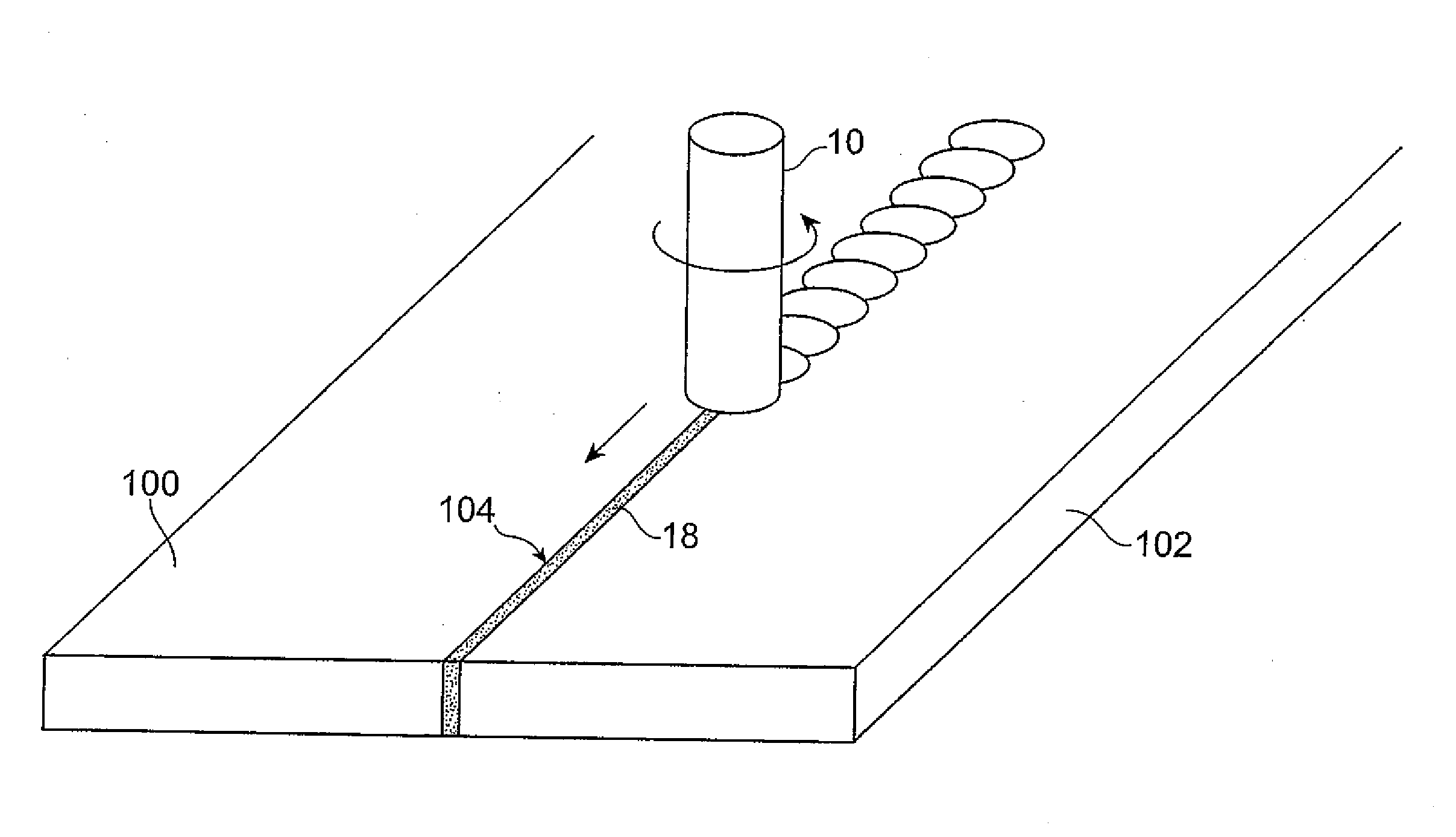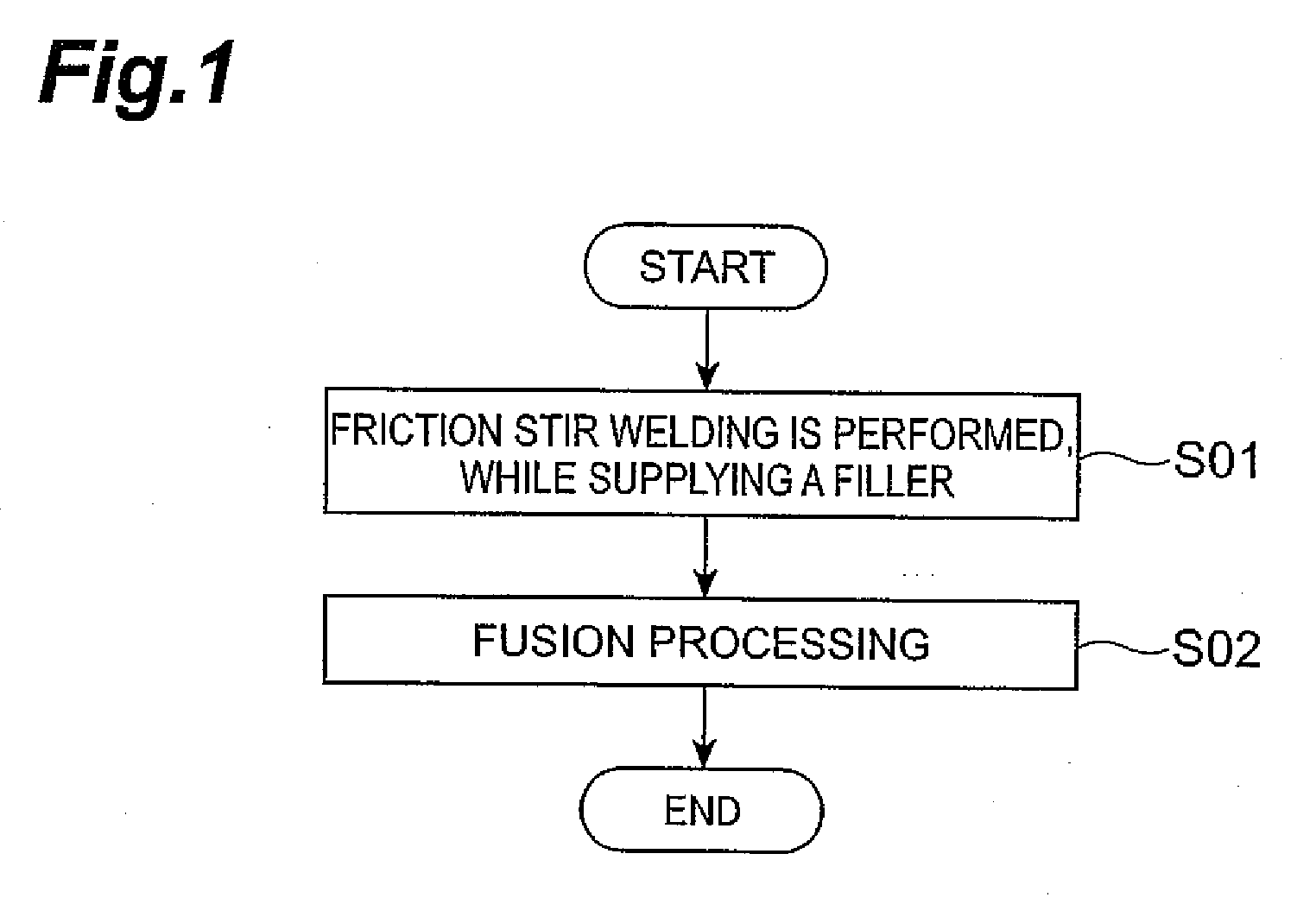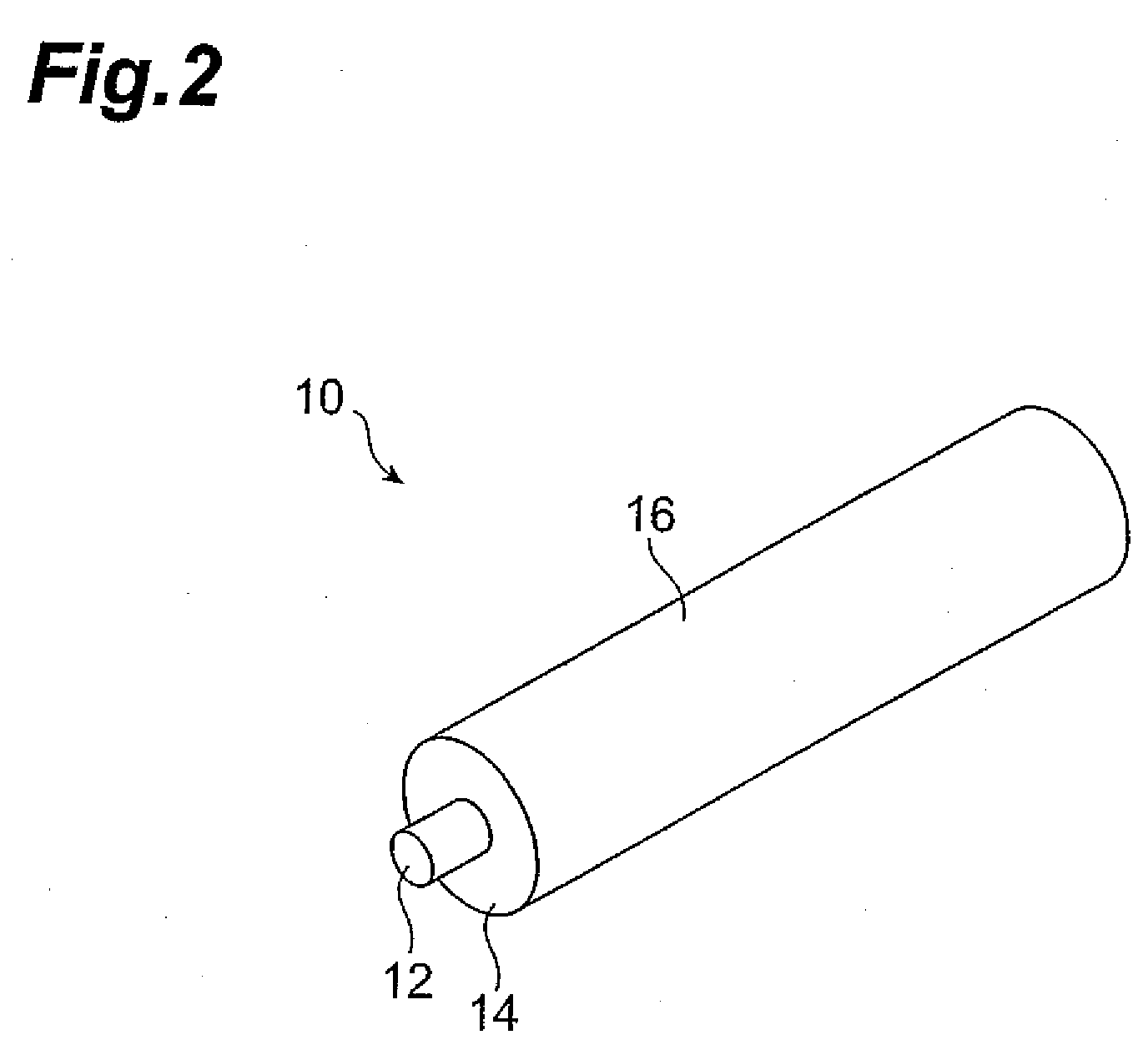Process for working metal material and structures
- Summary
- Abstract
- Description
- Claims
- Application Information
AI Technical Summary
Benefits of technology
Problems solved by technology
Method used
Image
Examples
Example
TEST EXAMPLE 1
[0104]An AZ31 material (a Mg alloy containing Al 3% and Zn 1%) with a thickness of 6 mm was prepared. A groove with a width of 1 mm and a depth of 2 mm was formed at the surface of the prepared AZ31 material as an assumed joining portion where friction stir welding will be performed. A SiC powder 108 with a particle size of 0.5-5 μm and a mean particle size of 1 μm shown in FIG. 10 was charged into the formed groove. In the friction stir welding mode such as shown in FIG. 3, a probe 12 of a rotary tool 10 was inserted into the groove on the AZ31 material surface into which the SiC powder was charged, and a friction stir treatment was performed by moving the rotating rotary tool 10.
[0105]FIG. 11 illustrates the state of a zone where friction stir welding of the present test example was conducted. FIG. 12 is an enlarged drawing of an interface of a base material and a stirred zone. As shown in FIG. 11, it is clear that the state of crystal grains in a stirred zone 112 su...
Example
TEST EXAMPLE 2
[0114]An A1050 material, which is a material conforming to JIS H 4000, with a thickness of 6 mm was prepared. Similarly to the above-described Test Example 1, a groove with a width of 1 mm and a depth of 2 mm was formed at the surface, a SiC powder was charged into the groove, and a friction stir treatment was performed. The A1050 material subjected to the friction stir treatment was heat treated for 1 h at 300° C. For comparison, the heat treatment for 1 h at 300° C. was also performed with respect to an A1050 material subjected to friction stir treatment without the addition of SiC powder and an A1050 material that was not subjected to a friction stir treatment. The microhardness of the A1050 materials was measured before and after the heat treatment.
[0115]FIG. 31 is a graph illustrating the microhardness of the A1050 materials in the present test example. As shown in FIG. 31, in the A1050 material that was not subjected to a friction stir treatment, the difference i...
Example
TEST EXAMPLE 3
[0116]Two A1050 materials, which are materials conforming to JIS H 4000, with a thickness of 5 mm were prepared. As shown in FIG. 3, the A1050 materials were abutted in the joining portion, a TiC powder with an average particle size of 1 μm was charged into the joining portion, and friction stir welding was conducted at a revolution speed of a rotary tool of 500 rpm and a joining speed of 500 mm / min. The width of the joining portion obtained by the friction stir welding is 10 mm on the surface of the A1050 material. A melt-run welding was then performed by TIG welding at a joining speed of 200 mm / min at 180 A parallel into the joining portion from above the joining portion obtained by the friction stir welding. The width of the molten range was about 6 mm in the center of the A1050 material sheet in the thickness direction thereof. A hardness in the central portion of the sheet in the thickness direction in the transverse cross-section of the joining portion was therea...
PUM
| Property | Measurement | Unit |
|---|---|---|
| Fraction | aaaaa | aaaaa |
| Melting point | aaaaa | aaaaa |
Abstract
Description
Claims
Application Information
 Login to View More
Login to View More - R&D
- Intellectual Property
- Life Sciences
- Materials
- Tech Scout
- Unparalleled Data Quality
- Higher Quality Content
- 60% Fewer Hallucinations
Browse by: Latest US Patents, China's latest patents, Technical Efficacy Thesaurus, Application Domain, Technology Topic, Popular Technical Reports.
© 2025 PatSnap. All rights reserved.Legal|Privacy policy|Modern Slavery Act Transparency Statement|Sitemap|About US| Contact US: help@patsnap.com



